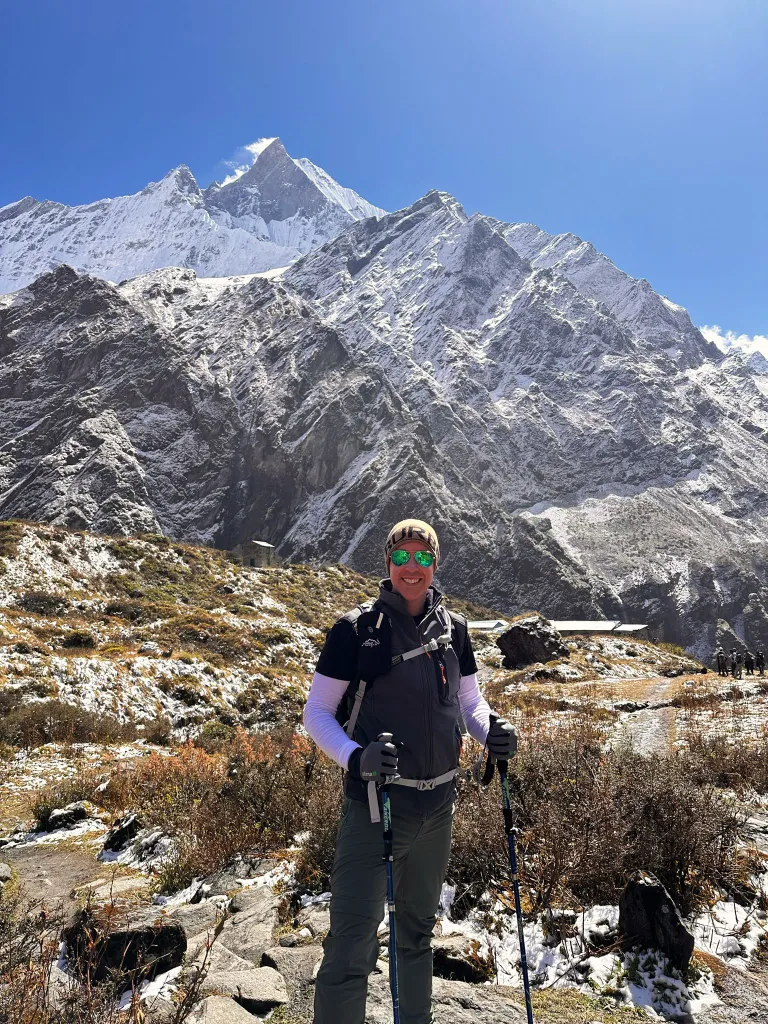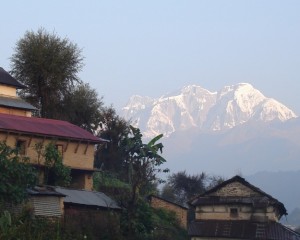Can Beginners Trek to Annapurna Base Camp?
Annapurna Base Camp Trek is one of Nepal’s classic trekking routes, offering trekkers a blend of natural beauty and cultural richness as they journey around the majestic Annapurna. While it is considered a moderately complex trek, many beginners hesitate before taking on the challenge.
Making your way to the lush rhododendron forest, culturally rich Gurung community and picturesque villages and terraced field with the cheering smiles of Annapurna I (8091m), II (7937m), III (7855m), IV (7525m), Annapurna south(7,219m), Himchuli(6,441 m), Gangapurna (7,455m.), Machhapuchhre (6,993m.), Dhaulagiri (8,167m.), Tilicho Peak (7,134m.), Pisang Peak (6,091m.). Enjoy savory dishes like Dal, Bhat, and Thenduk while enjoying the local folktale and visits to those ancient monasteries. Every moment in the trek is one heck of an experience no one wants to miss out on.
Can a beginner embark on this trek? The answer depends on one's physical fitness and preparation. With the proper training, acclimatization, and a steady pace, even first-time trekkers can complete the journey.
Stay with us as we explore all the information about the Annapurna Base Camp trek to help ensure a smooth and memorable adventure.
How long is the Annapurna Base Camp trek?
Annapurna Base Camp is a 12-day trekking journey that allows you to explore the soaring views of the three sister peaks: Annapurna I, Himchuli, and Machhapuchhre. Aside from that, the spinning prayer wheel, flapping chorten, and the butter aroma of the ancient monasteries immerse you in the beauty of the cultural gem of the region.
After reaching the appealing Pokhara Valley, you start with your official walk-through of the terraced rice fields, lush rhododendron forest, and tumbling waterfalls, diving into the untouched natural heritages through the scenic hike from Gurung villages and dense jungle towards Ghorepani. You reach the panoramic gem Poon Hill where you get to witness the marvelous sunrise and sunset views of the Himalayas.
Then, you gradually ascend to Annapurna Base Camp at 4130m, where the towering peaks warmly welcome you. The return journey takes you on a different route, with a chance to relax in the natural hot spring at Jhinu Danda, throwing away all your physical fatigue and heading back to Pokhara.

How difficult is the Annapurna Base Camp trek?
Annapurna Base Camp Trek is a moderate trek that is ideal for experienced and beginner trekkers. You should understand different factors to tackle the challenges and make your trekking experience efficient.
Terrain Challenges
The terrain of the Annapurna Base Camp Trek is diverse, offering stunning views and physical challenges that will test all trekkers.
- Steep Ascents: You will encounter stretches of steep ascents that are way too tiring, especially on longer days. These sections require careful pacing and consistent effort. Some steeper climbs may feel like a real physical challenge but are manageable with proper training.
- Narrow Trails: As you ascend, the trails become narrow, requiring focus and careful footwork. Although these narrow paths sometimes feel exposed, they are generally safe, with some sections protected by handrails or ropes. Trekking poles help maintain balance on these paths.
- Diverse Landscapes: The trek takes you through various landscapes— from lush forests and terraced fields to high-altitude areas. The first days are relatively easy, but the terrain becomes rockier as you ascend, with more challenging sections near the base camp.
- Duration: The Annapurna Base Camp trek lasts 10 to 12 days, and participants walk 6-7 hours daily, depending on the route and pace. This long duration is physically demanding, as participants must maintain stamina and motivation.
Altitude and Acclimatization
Annapurna Base Camp Trek takes you to a higher altitude of 4000m. In such high altitudes, you risk altitude sickness due to the reduced oxygen level. While this is lower than some other high-altitude treks like Everest, it is still a notable height, and trekking to this elevation can cause altitude sickness if not approached carefully.
Symptoms of altitude sickness include headaches, dizziness, nausea, vomiting, shortness of breath, and loss of appetite in the initial time. If any of these symptoms occur, it’s crucial to descend to a lower altitude.
But in severe conditions, High altitude cerebral edema (HACE) and high altitude pulmonary edema (HAPE) will occur that are life-threatening, so you need to seek medical help. The risk of altitude sickness arises when trekkers ascend too quickly without allowing their bodies to adjust to the lower oxygen levels at higher elevations. To avoid altitude sickness, trekkers should follow an acclimatization schedule that means extra rest days at key points along the trek, such as Ghorepani and Chhomrong, to give your body time to adjust.
Physical Fitness Requirements
Such diverse landscapes are physically demanding and require trekkers to have good fitness levels. There is a longer walking time, depending on the pace of your group and the terrain. As you gain elevation, the terrain becomes steeper; thus, the hikes feel more strenuous.
Similarly, the Annapurna Base Camp Trek involves many steep sections with stone steps, especially in the lower parts of the trek. These can be tough on the knees and calves,
You need good stamina and endurance, followed by proper strength exercises to tackle this. Start by taking long hikes on weekends and taking the stairs more often. Then, include running or cycling in your workout routine. Further strengthening exercises for your lower body, such as squats, lunges, and step-ups, are better choices.
Likewise, motivation, patience, and a positive attitude are crucial to keep moving forward during challenging moments.
How to prepare for the Annapurna Base Camp trek?
Aside from being physically and mentally fit for the trek, beginners might not know many things about the Annapurna Base Camp Trek, making their preparation difficult.
Acclimatization
Acclimatization plays a serious part in tackling altitude sickness. Gradual ascent is fundamental for any trekker. Don’t rush to the top. Take rest days at key points like Ghorepani and Chhomrong to allow your body time to adjust. Once you reach 3,000 m, avoid ascending more than 500 m a day. Stay hydrated throughout the trek, and ensure you eat a balanced diet.
Gear and Packing
- Clothing: Trekking Boots | Moisture-Wicking Base Layers | Insulating Mid-Layer | Waterproof Outer Layer | Down Jacket | Trekking Hat | Gloves | Buff or Scarf
- Backpacking Gear: Backpack (20-30L for daypack, 40-50L for main pack) | Rain Cover for Backpack
- Sleep System: Sleeping Bag (3-season)
- Hydration & Nutrition: Water Bottle | Water Purification Tablets | Energy Snacks (nuts, granola bars, fruit)
- Personal Items: Camera | Sunglasses | Sunscreen | Lip Balm | First-Aid Kit | Prescription Medications
- Other Essentials: Trekking Poles | Headlamp
Travel Insurance
Having travel insurance for your Annapurna Base Camp Trek is a must. But many beginners might not have an idea of what their coverage should look like :
- Medical Coverage: This covers medical emergencies, hospital treatment, or evacuation costs if you get injured or sick during the trek.
- Evacuation Coverage: In case of serious illness, injury, or altitude sickness, an emergency helicopter evacuation to the nearest hospital is provided.
- Trip Cancellation/Interruption: Provides reimbursement for trip cancellation or interruption due to unforeseen events such as weather delays, flight cancellations, or personal emergencies.
- Lost or Stolen Belongings: Covers lost, damaged, or stolen luggage, camera equipment, or valuables.
- Trek-Specific Coverage: Some policies cover trekking-related incidents or accidents, ensuring you’re protected for high-altitude trekking (up to a certain height).
- Flight Delay: Reimbursement for expenses incurred in case your flight is delayed or canceled.
- 24/7 Assistance: Access to a 24/7 helpline for support with emergencies or travel issues.
It’s best to consult your insurance provider to ensure the policy covers high-altitude trekking and emergency evacuations specific to Nepal.
Permits Required for Annapurna Base Camp Trek
To enter the Annapurna region, trekkers need two essential permits, which can be obtained in Kathmandu or Pokhara, before starting the trek. Your experienced guide will handle the permit process using your passport.
- The TIMS (Trekkers' Information Management System) Card Costs 2,000 NPR and is now issued only through trekking agencies, per the latest rule.
- Annapurna Conservation Area Permit (ACAP) – Costs 3,000 NPR and is available from the Nepal Tourism Board in Kathmandu (Bhrikutimandap) or Pokhara.
These permits are mandatory for all trekkers and help support conservation efforts and trekking management in the region.
To wrap up, The Annapurna Base Camp Trek is an incredible journey that blends breathtaking landscapes, diverse cultures, and a rewarding sense of accomplishment. While the trek is moderately challenging, beginners can absolutely complete it with the proper preparation, physical fitness, and acclimatization. With each step, you'll walk through lush forests, charming Gurung villages, and panoramic mountain vistas, making it an unforgettable experience.
If you're ready to embark on this adventure, let Nepal Vision Treks guide you with expert support, well-planned itineraries, and an experienced team.






